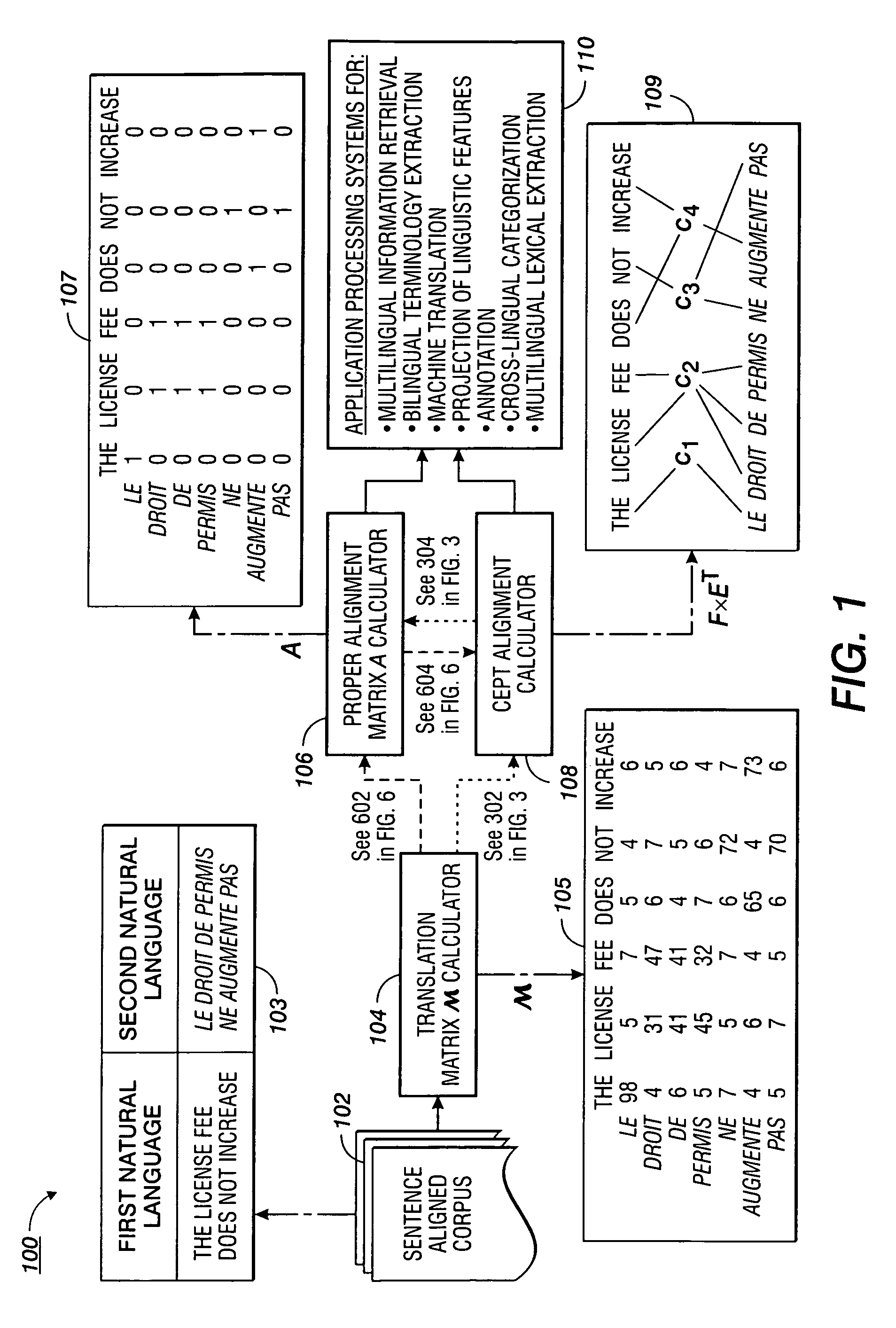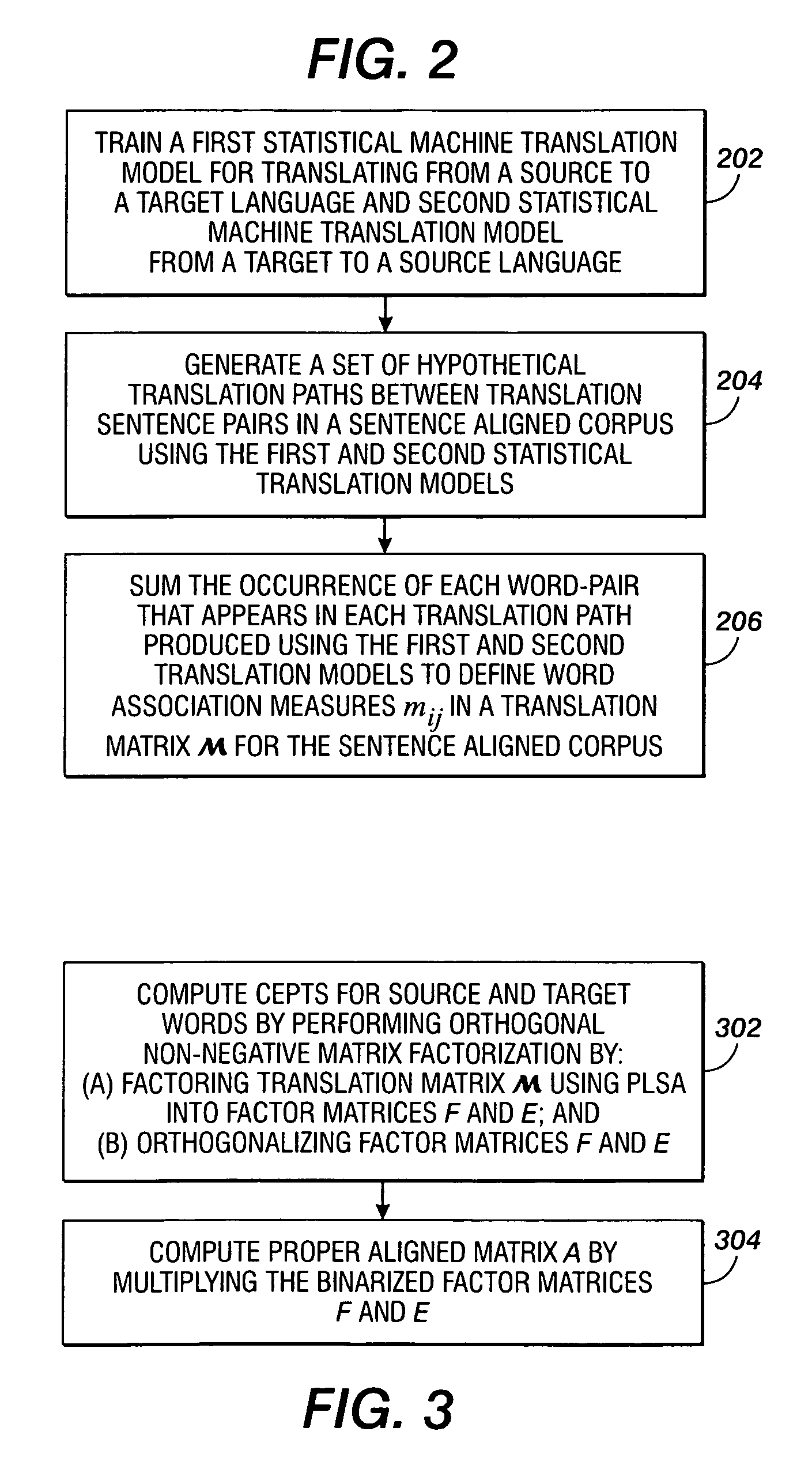Apparatus and methods for aligning words in bilingual sentences
a technology of appratus and bilingual sentences, applied in the field of appratus and methods for aligning words in bilingual sentences, can solve the problems of inability to meet the needs of users, too computationally complex, or too large precision of known methods for performing word alignment, and achieve the effect of improving translation models and computational efficiency
- Summary
- Abstract
- Description
- Claims
- Application Information
AI Technical Summary
Benefits of technology
Problems solved by technology
Method used
Image
Examples
first embodiment
[0042]In the second stage at 302(B), the resulting factor matrices F and E of the first stage at 302(A) are orthogonalized. In the second stage at 302(B), a probability is calculated such that each word e is aligned together with word f, which is obtained directly from P(e|f), which is the result of the first stage at 302(A). These probabilities are ranked to find the pairs of words with the highest probability. The pairs of words with the highest probabilities are aligned together and assigned a cept. The result of the orthogonalization is to align each source and target word with only one cept, where each cept may align a block (i.e., one or more words) of target words with a block of source words.
second embodiment
[0043]In the second stage at 302(B), each source word fi and each target word ej are assigned the most probable cept, which is defined as the cept c for which P(c|fi)∝P(c)P(fi|c) and P(c|ej)∝P(c)P(ej|c) are a maximal, respectively. The elements of the factor matrices F and E are assigned a one or a zero, respectively, as follows:
[0044]Fik∝{1ifk=argmaxcP(cfi),0otherwiseEjk∝{1ifk=argmaxcP(cej)0otherwise
where the proportionality ensures that the column of the factor matrices F and E sum to one, so each matrix remains as a conditional probability matrix. Given the MAP assignment, each line of the factor matrices F and E contains exactly one non-zero element, which is equivalent to having orthogonal factors, or orthogonal, non-negative factorization of the translation matrix M. For example, in the event there exists an ambiguity between the probability of a source word having a high probability to be associated with two different cepts, the MAP assignment forces the source ...
PUM
 Login to View More
Login to View More Abstract
Description
Claims
Application Information
 Login to View More
Login to View More - R&D
- Intellectual Property
- Life Sciences
- Materials
- Tech Scout
- Unparalleled Data Quality
- Higher Quality Content
- 60% Fewer Hallucinations
Browse by: Latest US Patents, China's latest patents, Technical Efficacy Thesaurus, Application Domain, Technology Topic, Popular Technical Reports.
© 2025 PatSnap. All rights reserved.Legal|Privacy policy|Modern Slavery Act Transparency Statement|Sitemap|About US| Contact US: help@patsnap.com



